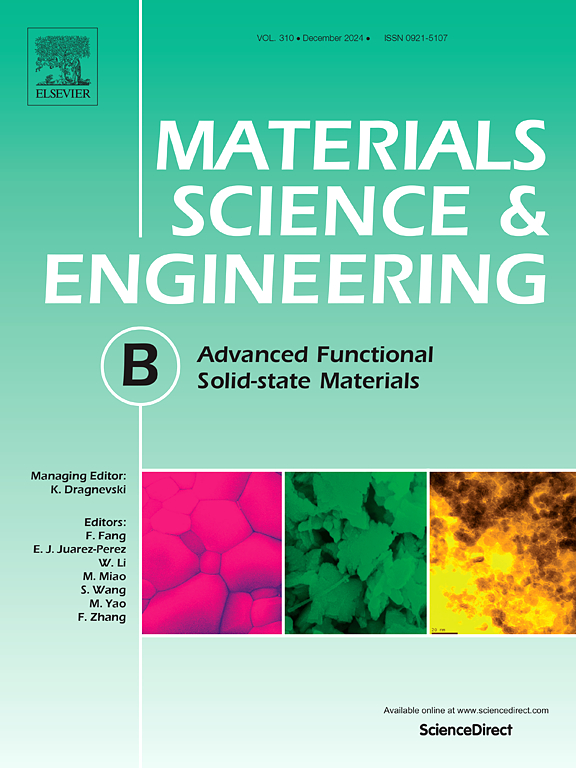Investigating the effect and structural properties of Graphene and Borophene on lead-free perovskite: Introducing the Graphene/CsSnCl3/Borophene
IF 3.9
3区 材料科学
Q2 MATERIALS SCIENCE, MULTIDISCIPLINARY
引用次数: 0
Abstract
In this research, the effect of the presence of Graphene and Borophene layers on CsSnCl3 and the performance of the Graphene/CsSnCl3/Borophene solar cell has been investigated. New hybrid structures consisting of Graphene, CsSnCl3 perovskite, and Borophene (GPB) have been introduced with the aim of presenting a suitable structure for use in solar cells, sensors and photovoltaic devices. The results of this study, the presence of Graphene and Borophene in GPB can reduce the bandgap by about 2 eV compared to single CsSnCl3. The optical absorption of GPB is approximately three times higher than that of CsSnCl3. The refractive index, reflectivity, extinction coefficient, and electrical susceptibility of GPB have also been calculated, yielding noteworthy results for these parameters. From a morphological perspective, bond lengths also appear to undergo changes. In fact, the layers of Graphene and Borophene modify quantum confinement on charge carriers and limit their degrees of freedom. The results of the dielectric function analysis indicate a relationship between energy loss and structural anisotropy, which can be attributed to the presence of Borophene. Structural anisotropy in GPB could be key to the selective propagation of electromagnetic waves through the composite. The optical bandgap of the composite was calculated using the Tauc and DASF methods, and comparing the results with reports on CsSnCl3 shows an increase in this quantity in the introduced composite. Simulations based on density functional theory (DFT) and SCAPS-1D show promising performance for the proposed solar cell GPB/CdS/SnOx.

求助全文
约1分钟内获得全文
求助全文
来源期刊

Materials Science and Engineering: B
工程技术-材料科学:综合
CiteScore
5.60
自引率
2.80%
发文量
481
审稿时长
3.5 months
期刊介绍:
The journal provides an international medium for the publication of theoretical and experimental studies and reviews related to the electronic, electrochemical, ionic, magnetic, optical, and biosensing properties of solid state materials in bulk, thin film and particulate forms. Papers dealing with synthesis, processing, characterization, structure, physical properties and computational aspects of nano-crystalline, crystalline, amorphous and glassy forms of ceramics, semiconductors, layered insertion compounds, low-dimensional compounds and systems, fast-ion conductors, polymers and dielectrics are viewed as suitable for publication. Articles focused on nano-structured aspects of these advanced solid-state materials will also be considered suitable.
 求助内容:
求助内容: 应助结果提醒方式:
应助结果提醒方式:


